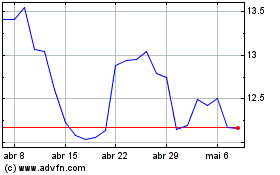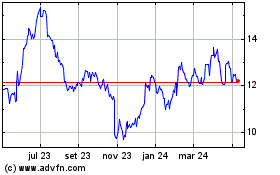By Dan Neil
PITY THE 2020 Lincoln Corsair. It wants so very much to be
electric.
New from Ford's premium division, the Corsair is a smartly
attired compact crossover based on the company's C-segment
front-drive architecture. With strong sales of its refreshed
Navigator and new Aviator SUVs, Lincoln is clawing its way back to
premium-luxury relevance after decades of being the car you rode
home in from the airport. Lincoln brand is targeting younger buyers
using leitmotifs of mindfulness and dangled promises of "quiet
flight," "serenity" and "sanctuary."
Mm-hmm. It all sounded like the usual Detroit balderdash until I
got into an Aviator and discovered that, huh, they really were
trying to create a vibe there. Imagine yourself inside Matthew
McConaughey's head. It's that quiet.
The Corsair is snipped from the same firmament as the Aviator,
conveying much of the larger car's presence -- the brightwork
grille, the blacked-out roof pillars, the sloping roofline, the
stately stance -- in a smaller package, little luxe-lite.
The program's engineers want consumers to know it's not just a
gussied-up Ford Escape. Among the callouts is the integrated
bushing multi-link rear suspension, a road-smoothing upgrade from
the Escape's short-long-arm suspension. Our Reserve AWD edition
($60,110, as tested) was also fitted with adaptive suspension, much
as the top-end Aviators. If Aviator rides like the proverbial
flying carpet, the Corsair aspires to be a levitating doormat.
Inside, our tester was upholstered in a lovely, glove-soft
leather. But Lincoln's pomp-masters went too far with the boast of
"hand-selected" cabin materials. What other appendage would you
use?
I was charmed by the push-button selector for the transmission,
a row of Wurlitzer-like tabs marked P, R, N, D, in the center
stack; less so by the lagging and limited central touch screen.
Ahead of the steering wheel, the digital instrument cluster hosts
mood-enhancing animation -- including images of Mother Earth, which
swims into view when drivers select the "Conserve" drive mode. Feel
free to reward yourself with a big steak and a blood-trade
cigar.
Power comes from either a turbo 2.0-liter four-cylinder gasser
(250 hp/280 lb-ft); or, as in our tester, a 2.3-liter turbo four
(295 hp/310 lb-ft), the same pepperbox found in the Mustang. An
eight-speed automatic transmission directs torque to the front
wheels unless the sensors detects a loss of traction or control, at
which point the AWD auto-engages, if so equipped.
Drivers can engage AWD themselves by selecting "Slippery" or
"Deep Conditions" drive modes. I'll take rejected Van Halen album
titles for $200.
Under the hood is what Lincoln weirdly calls a "dual-walled
dashboard," as if it were model-year 1925. This is actually a
baffled engine shroud, creating a soundproofing air gap between
engine and cabin (this part is also shared with the Ford
Explorer/Lincoln Aviator). Unpleasant excitations that get through
the firewall get throttled by the cabin's sub-aural noise
cancellation system.
What's with Ford's sudden crush on hush? The company opened a
new driving dynamics laboratory in Dearborn in January 2018, a
facility which includes a semi-anechoic test chamber with
four-wheel rollers, in a room capable of extreme temperature
testing, from -40 to 140 F. While you're thinking how awesome that
is, spare a moment to be horrified that Ford didn't have such a
facility before, which is vital to tracking down acoustic hot spots
like whistling, droning, buffeting, and unexpected resonances.
Ford's investment in NVH (noise, vibration, and harshness)
brings it into line with its premium-luxury competitors, some of
whom, like Toyota-Lexus, have been selling serenity for decades.
But all OEMs are running into the same acoustic wall: To meet fuel
economy and emission standards world-wide, car makers are shrinking
internal-combustion (IC) engines and requiring them to work harder.
And louder.
Which brings us back to the Corsair. In what qualifies as an
engineering irony, because other noises and vibrations are so well
attenuated, the engine and drivetrain stand out in curious relief.
It sounds a bit like you're being discreetly tailed by somebody in
a Mustang.
The 2.3-liter is not the most melodious of organs, anyway. It
sneers grumpily if you drive off before the cold-start cycle is
complete, which everyone always does. Faint piping and
whisper-whistles (the turbo) carry over the piston-ginning under a
hard throttle, before the eight-speed transmission skip-steps to
high gear, and the rpm falls. Yes, it's virtually silent at idle;
the ticking of the direct-injection jets is inaudible. But when you
start pumping a lot of air and gas through it, you can't unhear the
quiet riot.
It's not vibration reaching the driver. The Corsair passes the
stop/start engine-shake test with flying colors, with a barely
discernible tremor. It's the half-heard soundtrack of a distant,
disconnected power source that's weird.
So, to recap: Here is a product whose makers heavily invested in
cabin quiet as a market differentiator, using latest methods and
best practices. These engineers have battled howling winds,
whistling side mirrors, roaring roads, and droning tires -- all
that, only to provide an empty stage for a one-man gasoline band,
playing furiously.
As much as there is to like about Lincoln's new direction, it
will be hard for any IC-powered vehicle to tout cabin isolation and
powertrain refinement in the growing shade of vehicle
electrification. Those bars have been reset.
It's a lot to put on these little, likable shoulders. But the
Corsair feels representative of the moment when the present is
unsatisfactory and so much of the future is caught in the
pipeline.
2020 Lincoln Corsair 2.3L Reserve
Base Price: $42,630
Price, as Tested: $60,110
Engine and Drivetrain: Turbocharged and intercooled
direct-injection 2.3-liter DOHC inline four; eight-speed automatic
transmission with manual-shift mode; on-demand AWD
Power/Torque: 295 hp at 5,500 rpm/310 lb-ft at 3,000 rpm
Length/Width/Height/Wheelbase: 180.6/83.0 (w/mirrors)/64.1/106.7
inches
Curb Weight: 3,848 pounds, before options
EPA Fuel Economy: 21/28/24 mpg
Cargo Capacity: 27.6/57.6 cubic feet (2nd row up/folded)
Write to Dan Neil at Dan.Neil@wsj.com
(END) Dow Jones Newswires
February 27, 2020 15:45 ET (20:45 GMT)
Copyright (c) 2020 Dow Jones & Company, Inc.
Ford Motor (NYSE:F)
Gráfico Histórico do Ativo
De Mar 2024 até Abr 2024

Ford Motor (NYSE:F)
Gráfico Histórico do Ativo
De Abr 2023 até Abr 2024
